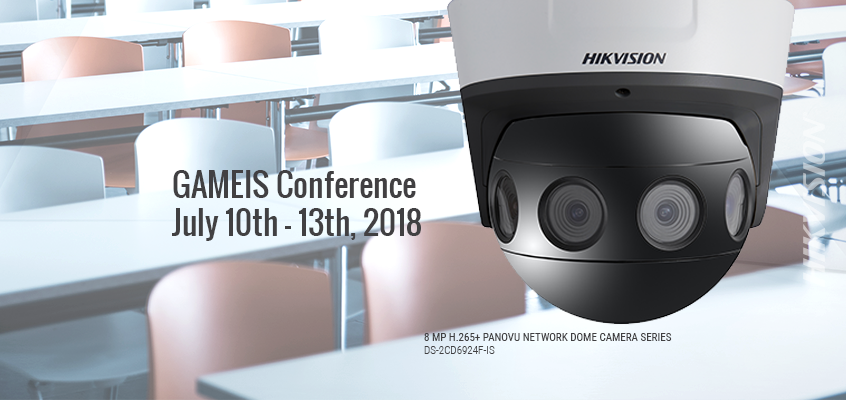Hikvision présente la technologie de surveillance et d'apprentissage pour les écoles du primaire à la conférence de la Géorgie, offre une gamme de solutions pour réduire la vulnérabilité dans les systèmes de sécurité des écoles
Hikvision présente la technologie de surveillance et d'apprentissage pour les écoles du primaire à la conférence de la Géorgie, offre une gamme de solutions pour réduire la vulnérabilité dans les systèmes de sécurité des écoles
Hikvision présente cette semaine ses solutions de surveillance verticale et d'apprentissage à la conférence GAMEIS (Georgia Association of Managers of Educational Information Systems), qui se tient au Savannah Trade and Convention Centre à Savannah, en Géorgie.
« Le salon GAMEIS est une occasion formidable pour notre équipe régionale du sud-est de rencontrer et d'interagir avec les décideurs et de mettre en évidence les solutions technologiques Hikvision adaptées aux besoins du marché de l'éducation K-12 », a déclaré Scott Stone, directeur des ventes pour la région sud-est. Stone a ajouté que l'attention portée par Hikvision sur les solutions de cybersécurité pour les partenaires est une valeur ajoutée pour les utilisateurs dans le domaine de l'éducation.
Dans le hall d'exposition, l'équipe Hikvision présentera l'étendue de la technologie de surveillance et d'apprentissage, y compris la reconnaissance faciale, les caméras multi capteurs, le contrôle d'accès et les solutions d'interphone vidéo. La station d'interphone vidéo intérieure Hikvision S-KH8301-WT avec écran tactile de 7 pouces offre une communication audio-visuelle mains libres entre la porte et la station maître et télécharge automatiquement les messages d'alarme vers la station maîtresse, le logiciel client ou l'application. Associé à la station de porte en métal DS-KV8X02-IM de Hikvision, qui peut s'intégrer aux NVR Hikvision en leur envoyant des notifications d'alarme et en prenant en charge l'enregistrement et la lecture NVR, ce système offre une flexibilité et un ensemble de fonctionnalités abordables.
Partie intégrante de la série Smart Pro, le modèle PanoVu DS-2CD6924F-IS de Hikvision est une caméra panoramique PTZ de 8 MP dotée d'un indice de protection IP67, d'un capteur CMOS à balayage progressif, de fonctions intelligentes et de la technologie DarkFighter pour une qualité d'image optimale même dans des conditions de faible luminosité. Hikvision présentera également le modèle PanoVu multi-capteurs DS-2CD6D24FWD-Z, une caméra de surveillance de 8 MP avec capteur CMOS à balayage progressif avec indice de protection IP67 et IK-10 pour la résistance au vandalisme. Les caméras multi-capteurs offrent une plus grande conscience de la situation avec une capture d'image plus étendue, et la facilité de visualisation peut améliorer l'efficacité opérationnelle tout en offrant des solutions rentables avec des images de haute qualité pour les utilisateurs.
La technologie Hikvision de surveillance et d'apprentissage offre une gamme de solutions pour réduire la vulnérabilité des systèmes de sécurité basés sur l'éducation et améliorer la fonctionnalité de la surveillance grâce à des solutions innovantes et abordables.
GAMEIS a été créé en 1982 et accueille sa conférence annuelle pour fournir un forum pour les meilleures pratiques de technologie de l'information, des solutions et des idées orientées vers les dirigeants des systèmes scolaires publics à travers la Géorgie.
Pour plus d'informations sur Hikvision à GAMEIS, visitez notre page d'événements en ligne.

